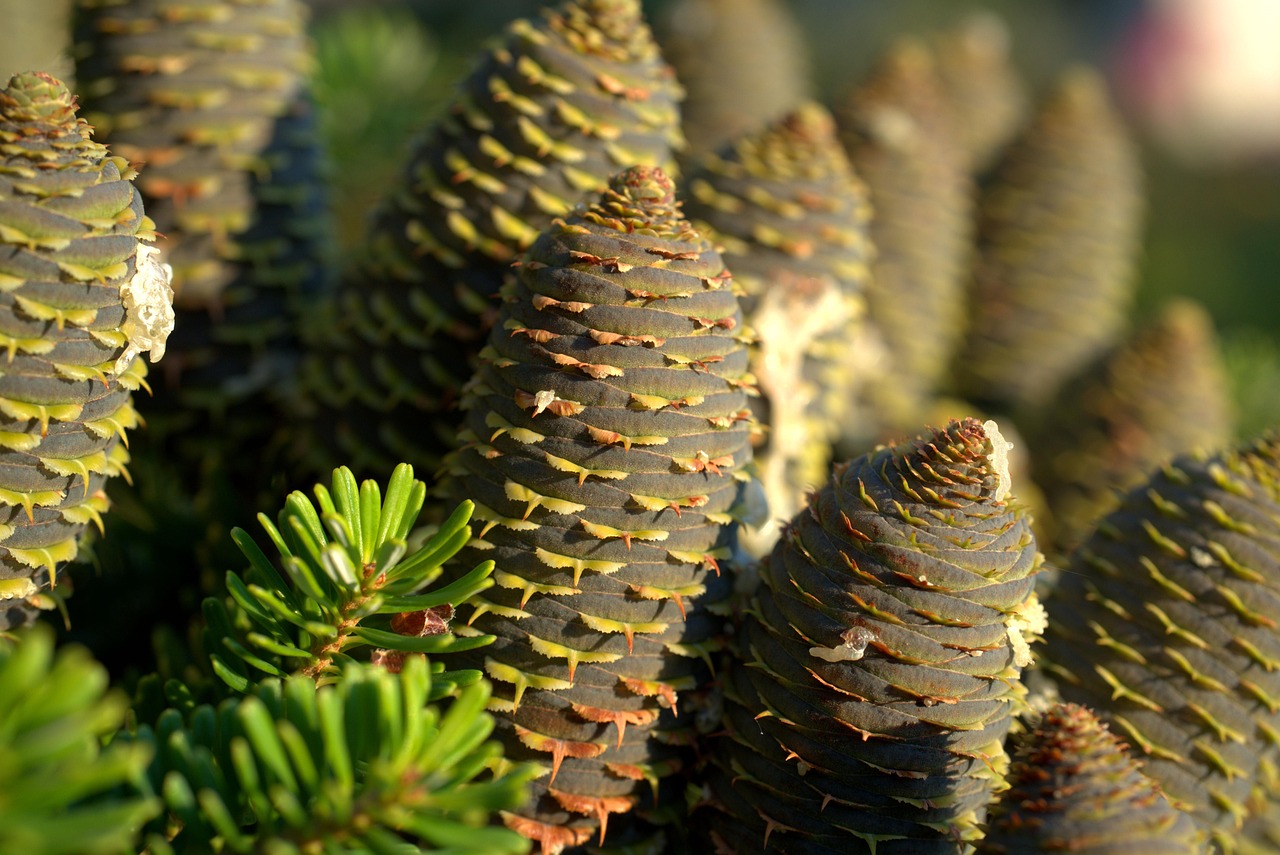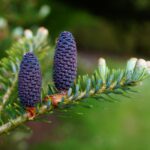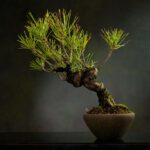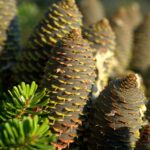How Fast Does Black Hills Spruce Grow? Growth Rate Guide

When I first started looking into Black Hills spruce, I was curious about how quickly it would grow. It’s a beautiful tree, and knowing its growth pace helps a lot with planning. Generally speaking, the Black Hills spruce is considered a slow-growing conifer. Its annual height increase is typically less than 12 inches. This isn’t a tree that will shoot up overnight; it takes its time establishing itself and developing.
Understanding How Fast Black Hills Spruce Grows
Several factors influence this growth rate, and it’s not just about age. Things like where you plant it, the soil quality, and how much sun it gets all play a part. For instance, a tree planted in ideal conditions might show a slightly faster growth than one struggling in a less-than-perfect spot.
Here’s a general idea of what to expect:
- Young Trees (First Few Years): Expect very slow initial growth as the tree focuses on root development. It might only add a few inches in height each year.
- Established Trees: Once it’s settled in, the growth rate might pick up slightly, but it will still be considered slow compared to many other evergreen species.
It’s important to distinguish the Black Hills spruce from its close relative, the black spruce. While both are spruces, they have different preferences and growth habits. The Black Hills spruce, a cultivar of white spruce, thrives in drier, cooler climates and is known for its dense, narrow form. Understanding these nuances helps set realistic expectations for how fast your Black Hills spruce will grow.
It’s easy to get caught up in wanting a tree to grow quickly, but with the Black Hills spruce, patience is rewarded with a sturdy, attractive specimen that requires minimal fuss once established. Its slower pace contributes to its dense structure and longevity.
If you’re looking for a tree that provides a quick privacy screen, this might not be your first choice. However, for a long-term landscape feature that offers consistent beauty and resilience, the Black Hills spruce is a solid option.
Native Habitat & Hardiness Zones Affecting How Fast Black Hills Spruce Grows
When I’m thinking about how fast a Black Hills spruce will grow, I always consider where it’s coming from and where it’s going to live. These trees are originally from the Black Hills region of South Dakota, which gives you a clue about their preferences. They really like it where it’s not too humid, has cold winters, and summers that aren’t scorching hot. This natural background tells me a lot about what conditions will help them thrive and, by extension, grow at their best pace.
USDA Hardiness Zones are a big help here. They basically tell you if a plant can survive the winter in a particular area based on average minimum temperatures. For the Black Hills spruce, I’ve found they do best in zones 2 through 6. If you’re in a zone outside of this range, you might see slower growth or even struggle to keep the tree healthy. It’s not impossible, but you’ll likely need to put in more effort.
Here’s a quick look at what those zones mean:
- Zone 2: Average annual minimum temperature of -50°F to -40°F.
- Zone 3: Average annual minimum temperature of -40°F to -30°F.
- Zone 4: Average annual minimum temperature of -30°F to -20°F.
- Zone 5: Average annual minimum temperature of -20°F to -10°F.
- Zone 6: Average annual minimum temperature of -10°F to 0°F.
So, if I’m in, say, zone 7, I might expect my Black Hills spruce to grow a bit more slowly than if I were in zone 4. It’s all about matching the tree’s natural needs to the climate where I’m planting it. Getting the hardiness zone right is probably the most important first step in predicting its growth.
It’s interesting how specific these trees are about their environment. They aren’t the most adaptable when it comes to climate, so picking the right spot based on these zones really makes a difference in how well they settle in and start putting on growth.
Growth Rate Benchmarks: What Is a Fast vs Slow Pace For Black Hills Spruce
When I’m thinking about how fast a Black Hills Spruce grows, it’s important to set some expectations. These trees are generally considered slow growers. What does that really mean in terms of inches per year? Typically, you’re looking at an increase of less than 12 inches annually. This isn’t like some of the faster-growing trees out there that might add over two feet in a good year.
To put it into perspective, here’s a simple breakdown:
- Slow Growth: Less than 12 inches per year.
- Moderate Growth: 12 to 24 inches per year.
- Fast Growth: More than 24 inches per year.
So, the Black Hills Spruce definitely falls into that ‘slow’ category. This isn’t a bad thing, though. It often means a denser, more robust tree over time, and it’s great if you’re looking for something that won’t quickly outgrow its space. It’s a tree that takes its time to establish itself, which can be a good thing for long-term health and structure.
It’s easy to get caught up in wanting instant results, but with trees like the Black Hills Spruce, patience is really rewarded with a beautiful, sturdy specimen.
If you’re planting a Black Hills Spruce, understanding this slower pace helps when planning your landscape. You won’t need to worry about it quickly becoming too large for its spot, and it can be a great choice for creating a natural border around your yard or property, or for privacy trees. It’s a tree that matures into a handsome, compact form, making it suitable for many different garden sizes.
First Years: How Fast Black Hills Spruce Grows As a Young Tree
When you first bring home a young Black Hills spruce, it’s like a new puppy – it needs a bit of attention to get settled. For the first year or two, these trees are mostly focused on putting down roots. You won’t see a ton of upward growth during this period, and that’s perfectly normal. Think of it as building a strong foundation.
During its initial years, a Black Hills spruce might only add about 6 to 12 inches in height annually. This might seem slow compared to some other trees, but it’s a sign of healthy development. The key is to provide consistent moisture, especially during dry spells. Watering it weekly, if there’s no significant rain, will help it establish a good root system. It’s also important to keep the area around the base clear of grass and weeds, as they compete for water and nutrients.
Here’s a general idea of what to expect in the first few years:
- Year 1: Focus is on root establishment. Height gain might be minimal, perhaps only a few inches.
- Year 2: Roots continue to strengthen, and you’ll likely see a bit more top growth, maybe 6-10 inches.
- Year 3 onwards: Once established, the growth rate will start to pick up, moving towards its more typical pace.
It’s really about patience at this stage. The tree is working hard underground, and that initial slow growth is actually a good thing for its long-term health and stability.
Don’t be discouraged if your young Black Hills spruce doesn’t shoot up like a weed. This slow start is typical and necessary for the tree to develop a robust root system, which will support its growth for decades to come.
Mature Growth: How Fast Black Hills Spruce Grows Once Fully Established
Once a Black Hills spruce has settled in and its roots are well-established, its growth rate tends to stabilize. While it’s never going to be a super-fast grower compared to some other conifers, it does reach a respectable mature size. I’ve found that these trees typically reach heights between 30 to 60 feet, with a spread of about 15 to 25 feet. This makes them a good choice if you’re looking for a substantial tree that won’t overwhelm a smaller yard too quickly.
The mature Black Hills spruce is known for its dense, pyramidal shape, which it maintains even as it gets older. This characteristic makes it a popular choice for windbreaks and screening.
Here’s a general idea of what to expect in terms of mature dimensions:
- Mature Height: 30 – 60 feet
- Mature Spread: 15 – 25 feet
- Lifespan: Can live 80 years or more
It’s important to remember that these are averages. The actual size your tree reaches will depend a lot on the conditions it’s growing in. I’ve seen trees in ideal spots, with good soil and plenty of sun, that have pushed the upper limits of these ranges, while others in less favorable conditions have stayed on the smaller side.
While the growth rate might seem slow compared to some other trees, the Black Hills spruce offers a dense, attractive form that is quite durable. Its slower pace contributes to its sturdy structure and resistance to damage from snow and ice, which is a big plus in my book.
For those interested in the specifics of its growth, it’s generally understood that the Black Hills spruce adds less than 12 inches in height annually once it’s past its initial establishment phase. This steady, unhurried growth is part of what gives the tree its robust nature. If you’re looking for a tree that fills out nicely and provides a consistent presence in the landscape for decades, the mature Black Hills spruce is a solid option. It’s a tree that really settles in and becomes a permanent fixture, unlike some faster-growing trees that might need more attention over time. I’ve seen them used effectively in windbreaks west of Iowa, showing good resilience.This variety of white spruce is quite hardy.
Environmental Factors That Alter How Fast Black Hills Spruce Grows
You know, when I first started looking into Black Hills spruce, I figured it was pretty straightforward. Plant it, water it, and watch it grow. But it turns out, a bunch of outside stuff can really mess with its pace. It’s not just about the tree itself, but where and how it’s living.
One of the biggest things is sunlight. These trees really do best when they get full sun. If you put one in a spot that’s too shady, or even just gets partial sun, it’s going to grow slower. I’ve seen it myself; a tree tucked away under some bigger maples just wasn’t putting on much height compared to one out in the open.
Then there’s the soil. Black Hills spruce likes it well-drained, and it prefers soil that’s a bit on the acidic side. If the soil is too wet or too alkaline, the tree can struggle. It’s not going to die overnight, but its growth will definitely be hampered. I always try to check the soil pH before planting anything new, just to be safe.
- Sunlight: Full sun is ideal for the fastest growth. Partial shade will result in slower development.
- Soil Drainage: The tree needs soil that drains well. Soggy conditions can lead to root problems and stunted growth.
- Soil pH: While adaptable, the Black Hills spruce favors slightly acidic soil for optimal health and growth.
- Air Quality: These trees don’t do well in humid or overly wet conditions. They prefer drier air, which is why they struggle in urban or coastal areas.
It’s important to remember that these trees are native to higher elevations, meaning they’re used to cooler temperatures and less humidity. Trying to grow them in a hot, muggy climate is like asking a polar bear to live in the desert – it’s just not going to thrive.
Water is another factor, though maybe not in the way you’d think. Once a Black Hills spruce is established, it’s pretty drought-tolerant. But when it’s young, especially during its first couple of years, consistent watering is key. If it doesn’t get enough water when it’s trying to set down roots, that initial growth phase will be much slower. I learned that the hard way with a sapling I planted during a dry spell; it took ages to really get going. You can find more information on proper tree care practices to help ensure your spruce gets the best start.
So, while the tree has a general growth rate, all these environmental bits can really change the picture. It’s a good reminder that nature always has a say in how things turn out.
Care Practices to Maximize How Fast Black Hills Spruce Grows
To really get your Black Hills spruce off to a good start and encourage steady growth, a few key care practices can make a big difference. It’s not overly complicated, but paying attention to the basics will help your tree thrive.
First off, watering is important, especially when the tree is young. For the first couple of years, aim to water it weekly if there isn’t significant rainfall. This helps establish a strong root system. Once it’s settled in, it becomes much more drought-tolerant, but consistent moisture early on is key.
When it comes to soil, Black Hills spruce isn’t too picky, but it does prefer well-draining soil that leans a bit acidic. Adding some compost when you plant it is a good idea. It can handle clay, loam, or sand, as long as water doesn’t just sit there. If your soil is a bit too alkaline, you can amend it to make it more favorable.
Proper site selection is paramount. These trees prefer full sun but can tolerate partial shade. They also need good airflow and don’t do well in overly humid or wet conditions, preferring the drier, cooler air they’re adapted to in their native Black Hills habitat.
Fertilizer isn’t usually a big concern for this type of spruce. If you’ve amended the soil with compost at planting, that’s often enough. Only consider a soil test and adding nutrients if you notice signs of distress, like yellowing needles.
Pruning is minimal. You can trim off any dead or broken branches whenever you see them. If you want to shape the tree or create more clearance, you can remove lower, drooping branches. The best time for any optional pruning is late winter or early spring. Otherwise, these trees are pretty low-maintenance in the pruning department.
- Watering: Consistent moisture for the first two years is vital.
- Sunlight: Aim for full sun for the best growth rate.
- Soil: Ensure good drainage and slightly acidic conditions.
- Airflow: Provide good air circulation, avoiding overly humid spots.
If you’re looking to create a dense privacy screen, choosing the right evergreen is important, and Black Hills spruce can be a good option when given the right conditions.Proper spacing is also key for mature trees to reach their full potential without competing for resources.
Common Misconceptions & Challenges in Predicting How Fast Black Hills Spruce Grows
It’s easy to think that all trees of the same kind will grow at the same speed, but with Black Hills Spruce, that’s not quite the case. A lot of people assume a tree’s growth is just about how much water and sun it gets, and while those are big factors, there’s more to it. Predicting growth can be tricky because so many things play a role.
One common mix-up is confusing the Black Hills Spruce with its close relative, the Black Spruce. They’re different trees, and their growth habits aren’t identical. The Black Hills Spruce, specifically the ‘Densata’ variety, is known for its more compact form compared to the Black Spruce, which might prefer wetter spots and has darker cones.
Here are a few things that can throw off your growth predictions:
- Genetics: Just like people, individual trees can have slightly different growth potentials based on their parentage.
- Planting Location: Is it in a tight spot with lots of competition from other plants, or does it have plenty of room to spread out?
- Soil Quality: Even if the soil drains well, its nutrient content can make a big difference.
People often expect a tree to shoot up quickly right from the start, but young trees, especially evergreens like the Black Hills Spruce, often focus more on developing a strong root system in their first few years. This underground work isn’t visible, leading some to think the tree isn’t growing much at all.
Many people think they know how fast Black Hills Spruce trees grow, but there are some common mix-ups and tricky parts to figuring it out. It’s not always as simple as you might expect! Want to learn more about what affects tree growth and get expert advice? Visit our website today for all the details and to connect with our tree care specialists.
Frequently Asked Questions
How quickly does a Black Hills Spruce typically grow each year?
In my experience, a Black Hills Spruce usually grows less than a foot per year. It’s considered a slow-growing tree, so patience is key when planting one.
What is the average mature height of a Black Hills Spruce?
I’ve found that these trees can reach a mature height of about 50 to 70 feet. Some sources even mention they can grow up to 40 feet tall and 20 feet wide over many years.
Are Black Hills Spruce trees good for windbreaks?
Yes, I believe they are quite suitable for windbreaks, especially in areas west of Iowa. They are known for being strong against wind and heavy snow.
What are the best growing conditions for a Black Hills Spruce?
From what I’ve observed, they prefer full sun and well-drained soil. They also do best in dry, cool conditions, so they don’t always do well in very humid or wet places.
How often should I water a Black Hills Spruce?
When the tree is young, I recommend watering it weekly if there isn’t enough rain. Once it’s established, it won’t need much extra water, as it can handle dry spells fairly well.
Can I plant a Black Hills Spruce in different soil types?
Generally, yes. I’ve seen them grow in clay, sand, and loamy soils, as long as the soil drains well. They tend to prefer soil that is a bit acidic.



